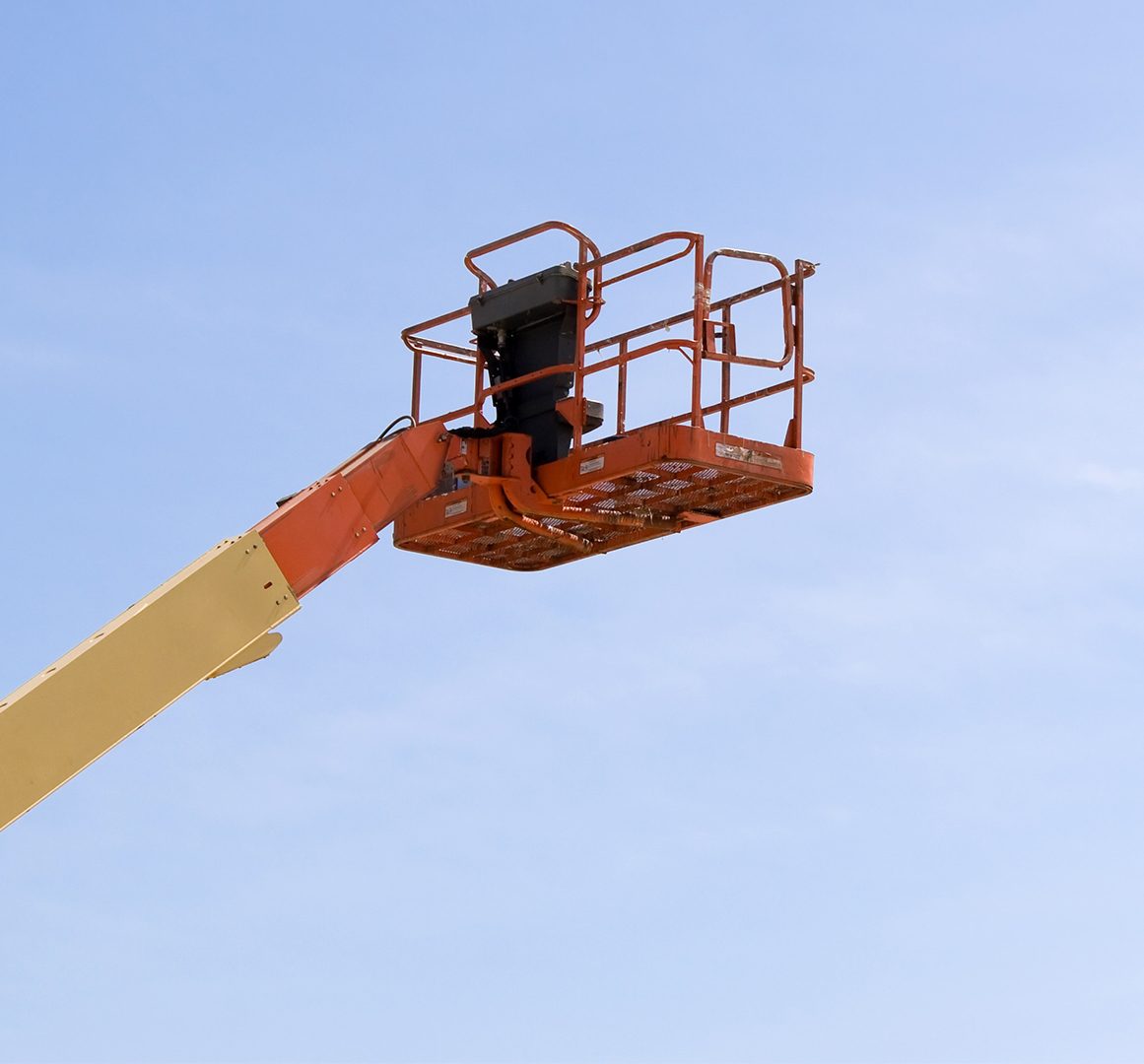[et_pb_section bb_built=”1″ admin_label=”section”][et_pb_row admin_label=”row”][et_pb_column type=”4_4″][et_pb_text admin_label=”Text” background_layout=”light” text_orientation=”left” use_border_color=”off” border_color=”#ffffff” border_style=”solid” header_text_color=”#282466″]
We never want our employees to get injured. Period.
Unfortunately, employees are injured far too often while performing their work. Preventing injuries must be our main concern, especially in situations where the equipment, like aerial lifts, exposes workers to additional hazards. Whether they are used on a construction site, or in an industrial setting, OSHA standards are the same under Subpart L of the Construction standards, 1926.453. OSHA revised the standards for general industry under the Walking-Working Surfaces final rule released in 2016, which states that “Scaffolds used in general industry must meet the requirements in 29 CFR part 1926, subpart L (Scaffolds)” in 1910.27(a).
What does it take to ensure your employees work safely on aerial lifts?
Training is the best way to prevent incidents and injuries. When employees understand the hazards they face and what they need to do to protect themselves, they champion their own safety. Training must include the major hazards they will face, including electrical, fall, struck-by, and falling object hazards. Any of these can be fatal, so employees must understand the severity of the hazards and what they need to do to protect themselves and others. They also must be trained to identify and avoid situations or conditions that increase the risk of an incident. Finally, they must be trained to inspect and operate the lift that they will use, including manufacturer requirements.
Besides training, employees must understand and follow safe work practices for aerial lifts.
This is not an exhaustive list of those practices, but is a good starting point:
- Only trained and authorized employees operate aerial lifts
- Inspect the lift at the start of each shift to make sure it is safe to use, following the manufacturer’s recommendations
- Stabilize the lift with outriggers on stable, level surfaces, when available
- Use fall protection 100% of the time in the lift
- Tie off to the engineered attachment point, not the guardrails
- Keep both feet on the floor of the platform or bucket
- Never climb on guardrails or handrails
- Never place any part of their body between the guardrails and overhead hazards. If the lift moves, the worker can be crushed.
- Lifts cannot be operated within 10 feet of energized overhead power lines
- Always assume that power lines and wires are hot
- Use caution, and refer to the manufacturer’s guidelines for safe use when operating a lift in strong winds
Training our workers, having safe work procedures, and enforcing safety requirements and policies, will significantly decrease the number of aerial lift incidents and injuries.
[/et_pb_text][et_pb_text admin_label=”Text” background_layout=”light” text_orientation=”left” use_border_color=”off” border_color=”#ffffff” border_style=”solid” text_text_color=”#282466″]
Have questions regarding aerial lifts and how to properly train your employees? Contact us to start a conversation.
[/et_pb_text][et_pb_contact_form admin_label=”Contact Form” title=”Contact Us” success_message=”Thank you for reaching out to us! One of our team members will be in contact with you shortly! Until then, check out our blogs for the latest news in safety.” email=”myates@optimum-usa.com, bbeardsley@optimum-usa.com” captcha=”off” use_redirect=”off” input_border_radius=”0″ use_border_color=”off” border_color=”#ffffff” border_style=”solid” custom_button=”on” button_text_color=”#f7f7f7″ button_bg_color=”#f89c1b” button_letter_spacing=”0″ button_use_icon=”default” button_icon_placement=”right” button_on_hover=”on” button_letter_spacing_hover=”0″ title_font_size=”20″ button_border_width=”0″ saved_tabs=”all” title_text_color=”#282466″] [et_pb_contact_field field_title=”Name” field_type=”input” field_id=”Name” required_mark=”on” fullwidth_field=”off” /][et_pb_contact_field field_title=”Email Address” field_type=”email” field_id=”Email” required_mark=”on” fullwidth_field=”off” /][et_pb_contact_field field_title=”Message” field_type=”text” field_id=”Message” required_mark=”on” fullwidth_field=”on” /] [/et_pb_contact_form][/et_pb_column][/et_pb_row][/et_pb_section]







